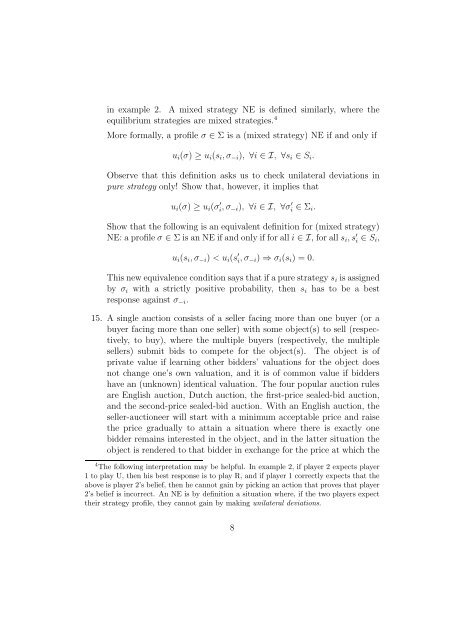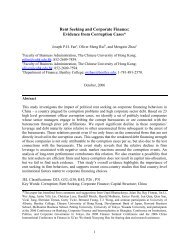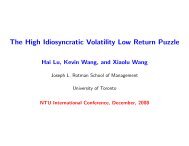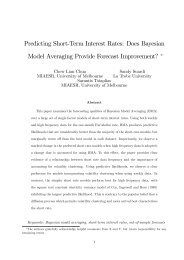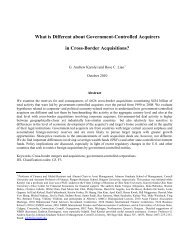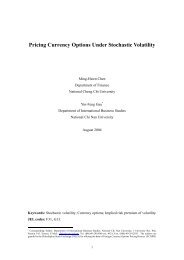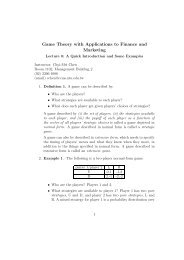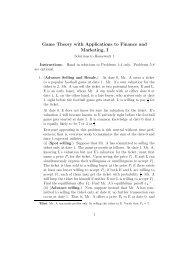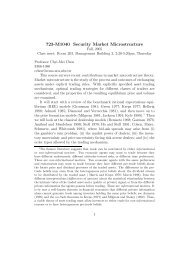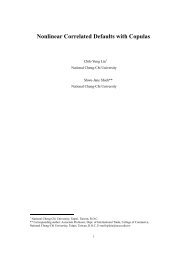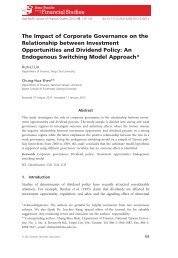Game Theory with Applications to Finance and Marketing
Game Theory with Applications to Finance and Marketing
Game Theory with Applications to Finance and Marketing
You also want an ePaper? Increase the reach of your titles
YUMPU automatically turns print PDFs into web optimized ePapers that Google loves.
in example 2. A mixed strategy NE is defined similarly, where theequilibrium strategies are mixed strategies. 4More formally, a profile σ ∈ Σ is a (mixed strategy) NE if <strong>and</strong> only ifu i (σ) ≥ u i (s i , σ −i ), ∀i ∈ I, ∀s i ∈ S i .Observe that this definition asks us <strong>to</strong> check unilateral deviations inpure strategy only! Show that, however, it implies thatu i (σ) ≥ u i (σ ′ i, σ −i ), ∀i ∈ I, ∀σ ′ i ∈ Σ i .Show that the following is an equivalent definition for (mixed strategy)NE: a profile σ ∈ Σ is an NE if <strong>and</strong> only if for all i ∈ I, for all s i , s ′ i ∈ S i,u i (s i , σ −i ) < u i (s ′ i , σ −i) ⇒ σ i (s i ) = 0.This new equivalence condition says that if a pure strategy s i is assignedby σ i <strong>with</strong> a strictly positive probability, then s i has <strong>to</strong> be a bestresponse against σ −i .15. A single auction consists of a seller facing more than one buyer (or abuyer facing more than one seller) <strong>with</strong> some object(s) <strong>to</strong> sell (respectively,<strong>to</strong> buy), where the multiple buyers (respectively, the multiplesellers) submit bids <strong>to</strong> compete for the object(s). The object is ofprivate value if learning other bidders’ valuations for the object doesnot change one’s own valuation, <strong>and</strong> it is of common value if biddershave an (unknown) identical valuation. The four popular auction rulesare English auction, Dutch auction, the first-price sealed-bid auction,<strong>and</strong> the second-price sealed-bid auction. With an English auction, theseller-auctioneer will start <strong>with</strong> a minimum acceptable price <strong>and</strong> raisethe price gradually <strong>to</strong> attain a situation where there is exactly onebidder remains interested in the object, <strong>and</strong> in the latter situation theobject is rendered <strong>to</strong> that bidder in exchange for the price at which the4 The following interpretation may be helpful. In example 2, if player 2 expects player1 <strong>to</strong> play U, then his best response is <strong>to</strong> play R, <strong>and</strong> if player 1 correctly expects that theabove is player 2’s belief, then he cannot gain by picking an action that proves that player2’s belief is incorrect. An NE is by definition a situation where, if the two players expecttheir strategy profile, they cannot gain by making unilateral deviations.8


